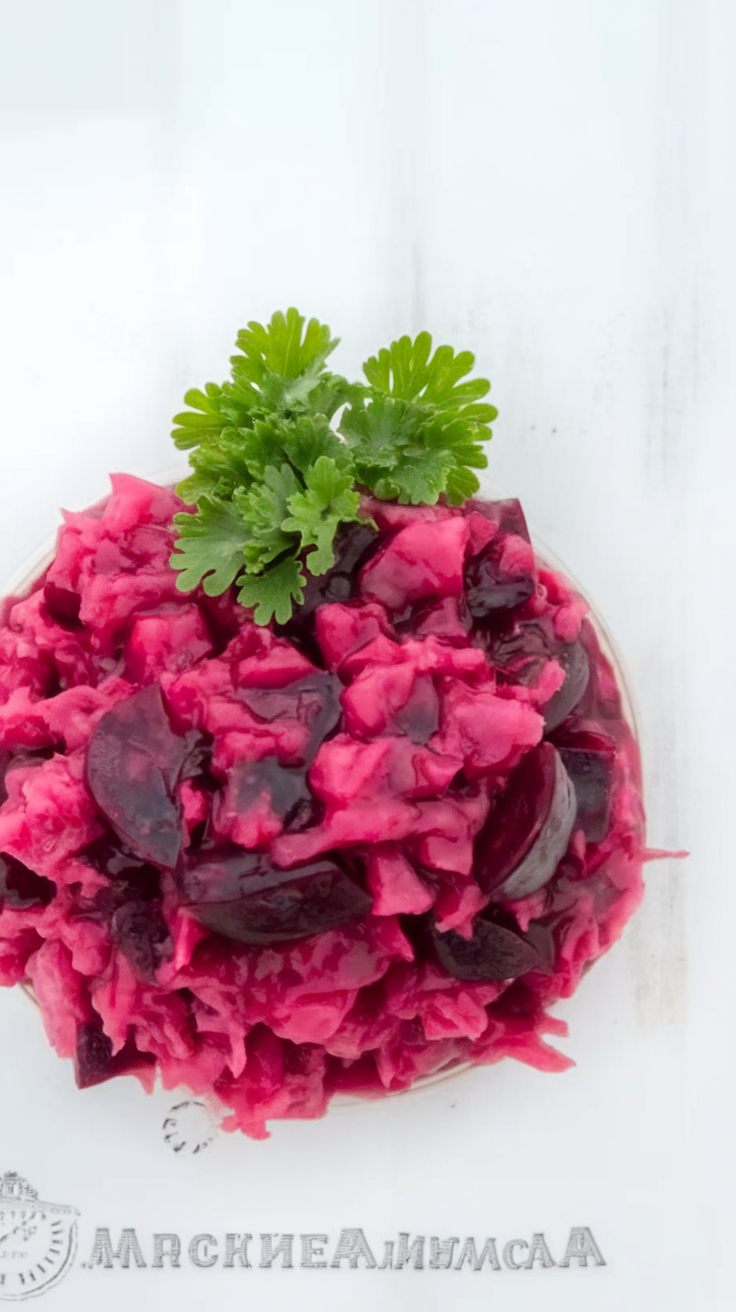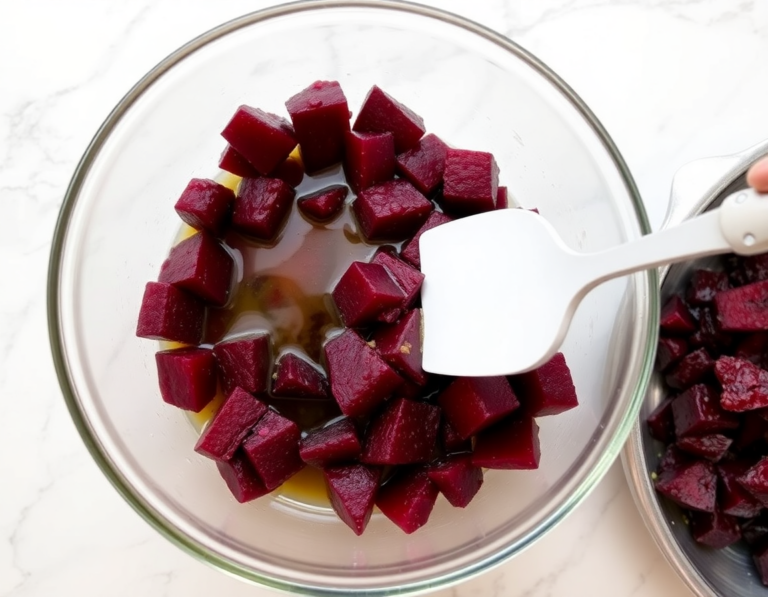When I think of Russian cuisine, my mind immediately wanders to the vibrant colors and bold flavors that define it. Picture this: a salad that’s like a Russian winter—unexpectedly bright and full of surprises. The vinaigrette, with its beets and pickles, is a melody of sweet and tangy notes that dance on your tongue, a curious symphony that somehow makes you feel cozy yet adventurous—like wearing a warm coat in a snowstorm while dreaming of summer.
Steps
- Boil the beets in a medium pot for about an hour until a knife pierces them easily, or use pre-cooked canned beets to skip this step. If using fresh beets, peeling them before cooking is easier than after.
- In a separate pot, cook the potatoes and carrots for around 30 minutes until a knife slides through the potatoes smoothly, being careful not to overcook them.
- Once cooked, drain the vegetables and allow them to cool to room temperature, either by refrigerating or leaving them out.
- Peel the skins off the cooled potatoes, beets, and carrots. Dice the potatoes, beets, carrots, and pickles, and finely chop the onion. Keep the diced beets in a separate bowl.
- Add the first tablespoon of sunflower oil to the beets, mixing well to minimize the color transferring to the other ingredients.
- Combine the beets with the remaining ingredients, adding the second tablespoon of oil and the vinegar. Adjust the sauerkraut and pickles to your taste, then refrigerate until serving.
Ingredients
- 3 medium beets, or 2 cans of beets (14.5 oz each), drained
- 3 medium potatoes
- 3 medium carrots
- 1/2 cup sauerkraut, drained
- 3 medium pickles
- 2 tablespoons sunflower or olive oil
- 1 tablespoon white vinegar
- 1 small onion, finely chopped (approximately 1/2 cup)
FAQ
- Can I use canned beets instead of fresh ones in the Russian Vinaigrette?
- Yes, canned beets can be used as a convenient alternative to fresh beets. They save time and reduce the mess since they don’t require cooking. Simply drain them before adding to the salad.
- What type of oil should I use for the vinaigrette?
- You can use either sunflower oil or olive oil for this recipe. Both work well, so you can choose based on your personal preference or what you have available.
- Is it important to mix the beets separately from other ingredients?
- Yes, mixing the beets with the first tablespoon of oil separately helps minimize the spread of their color to other ingredients, preserving the salad’s visual appeal.
- How far in advance can I prepare this salad?
- This salad can be made a day ahead of time. In fact, it often tastes better the next day as the flavors have more time to meld together.
- Can I adjust the amount of sauerkraut or pickles in the recipe?
- Absolutely. Feel free to adjust the quantities of sauerkraut or pickles to suit your taste preferences. You can add more if you prefer a tangier flavor.
Tips
- To save time and avoid the mess of cooking beets, consider using canned beets, which work just as well and eliminate the lengthy cooking process.
- To prevent the beet color from bleeding into other ingredients, mix the diced beets with the first tablespoon of oil separately before combining them with the rest of the salad.
- If you want to enhance the flavor, feel free to add more sauerkraut or pickles according to your taste preferences.
- For convenience, prepare this salad a day ahead, as it develops better flavors when allowed to sit overnight in the refrigerator.
Equipment
- Vidalia Chop Wizard (or similar vegetable chopper) – for dicing vegetables quickly and uniformly.
- Medium pots (if you need additional pots or a specific size for boiling vegetables).
- Mixing bowls – if additional or specific types are needed for the recipe.
- Vegetable peeler – if not already available at home.


